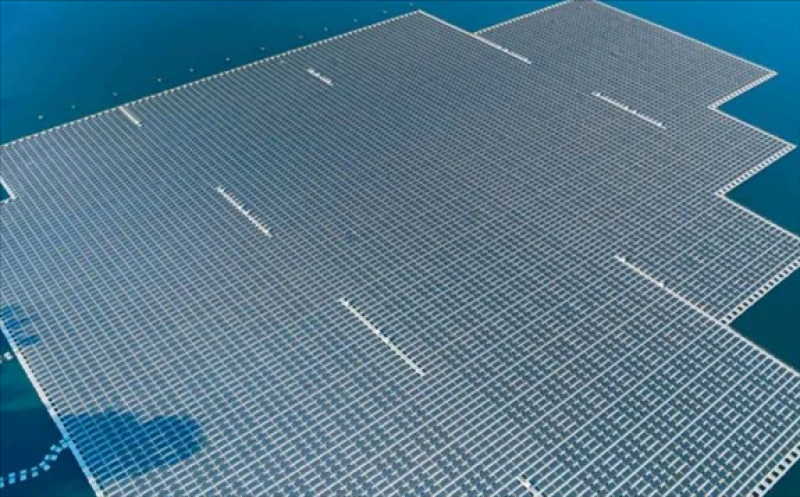Floating PV technology is making its first steps in the Balkan region, with companies in Greece, Albania, Romania, and Montenegro investing in new projects.

Greek renewables company Terna Energy is proceeding with realizing the first floating PV plant in the country, a 103 MW project on artificial lake Pournariou in the Arta region in the northwest.
So far, Terna has completed the environmental study, which has been submitted for consultation, and foresees an area of 114.4 hectares, which is 5.6% of the reservoir. The expectation is for a production of 156.2 GWh annually and a CO2 saving of 150,000 tonnes.
The company plans two more floating PV plants, one on lake Kastrakiou (120 MW) and one on lake Stratou (42 MW), while all three projects have a total budget of EUR 170 million.
Apart from Terna, PPC Renewables is another Greek company interested in floating PV technology. So far, it has received permits for 1.9 GW for PV, of which 50 MW are floating projects with the first one to be built on the artificial Polyfytos lake on the Haliacmon river.
Furthermore, German SINN Power plans to showcase the prototype of a floating solar power plant and its hybrid system utilizing wind and wave energy in Crete, while another German company, BayWa, is said to be looking at possible projects for the technology in Greece.
Environmental studies seen as crucial for floating PV growth
Given the sparsity of available land in some regions of the Balkans, floating PV presents an opportunity to grow the renewable sector without sacrificing agriculture and other economic activities. Furthermore, floating PV may save substantial amounts of water as shading reduces evaporation and there is also the fact that floating solar panels are more efficient due to the water’s cooling effect.
On the other hand, some municipalities are against floating PV, since they prefer to maintain the natural state of their region and avoid environmental and aesthetic degradation. There are indications that the lack of sunshine leads to an increase in toxic algae and reduces the amount of deepwater oxygen, affecting flora and fauna and carbon dynamics, which means the covered surface needs to be limited.
This means that proper environmental studies are crucial for the planned projects since they can alleviate much of the unease of the local population and municipalities about the impact by showcasing a rational use of the technology within bounds.
Albania, Montenegro and Romania plan forward
It should be noted that apart from Greece, Albania has been a hotspot for floating PVs during recent years. Norwegian green energy company Statkraft already installed the first floating solar power plant in Albania in 2021, on the reservoir of its Banja hydropower plant. However, soon after the commissioning, the facility was severely damaged and partially submerged.
Another floating PV plant project, of 12.9 MW, is underway at the Vau i Dejës hydropower plant reservoir.
In Montenegro, state power utility Elektroprivreda Crne Gore (EPCG) plans to build the first floating solar power plant in the country at its Slano reservoir near the city of Nikšić.
Another company with interest in the sector is Romanian Hidroelectrica, which is developing floating PV plant projects on reservoirs at its hydropower plants.
Global floating PV market to reach 4.8 GW by 2026
Floating photovoltaics are expected to become a quite large new global market by 2026, according to Global Industry Analysts (GIA), which has projected a 4.8 GW deployment by that year.
The market is currently at about 1.6 GW globally, and GIA predicts it would move at a compounded annual growth rate (CAGR) of 33.7% by 2026, reaching 4.8 GW. The Asia-Pacific region is expected to have the largest market share, around 60%, with China the fastest-growing market with a CAGR of 59.4%. The main issue so far is that FPV’s cost is much higher than that of stationary solar panels, said GIA.
At the beginning of 2022, the world’s largest floating PV plant went online in China. Huaneng Power International (HPI) completed the 320 MW facility in Dezhou, in China’s Shandong province. The project is expected to produce around 150 GWh per year. It will be resistant to typhoons and water corrosion, among other harsh environmental factors, said the company.